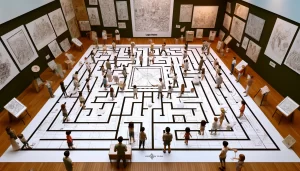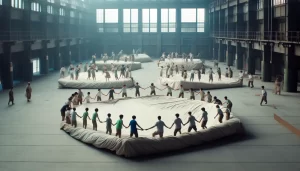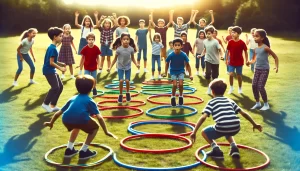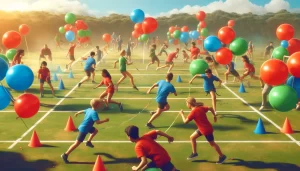
Bubble Soccer
Players wear large inflatable bubbles and play soccer. The bubbles protect players from impacts, making the game safe and hilarious.

Find the Pattern
Person stands in middle of a circle and points at people in the circle one by one. The person pointing has a pattern in mind. They answer either yes or no to whatever the people in the circle say, according to their pattern. People in the circle need to figure out what the pattern is. (Example: Only says "yes" if the guess is a food, only says "yes" if the answerer pauses before guessing, etc.)
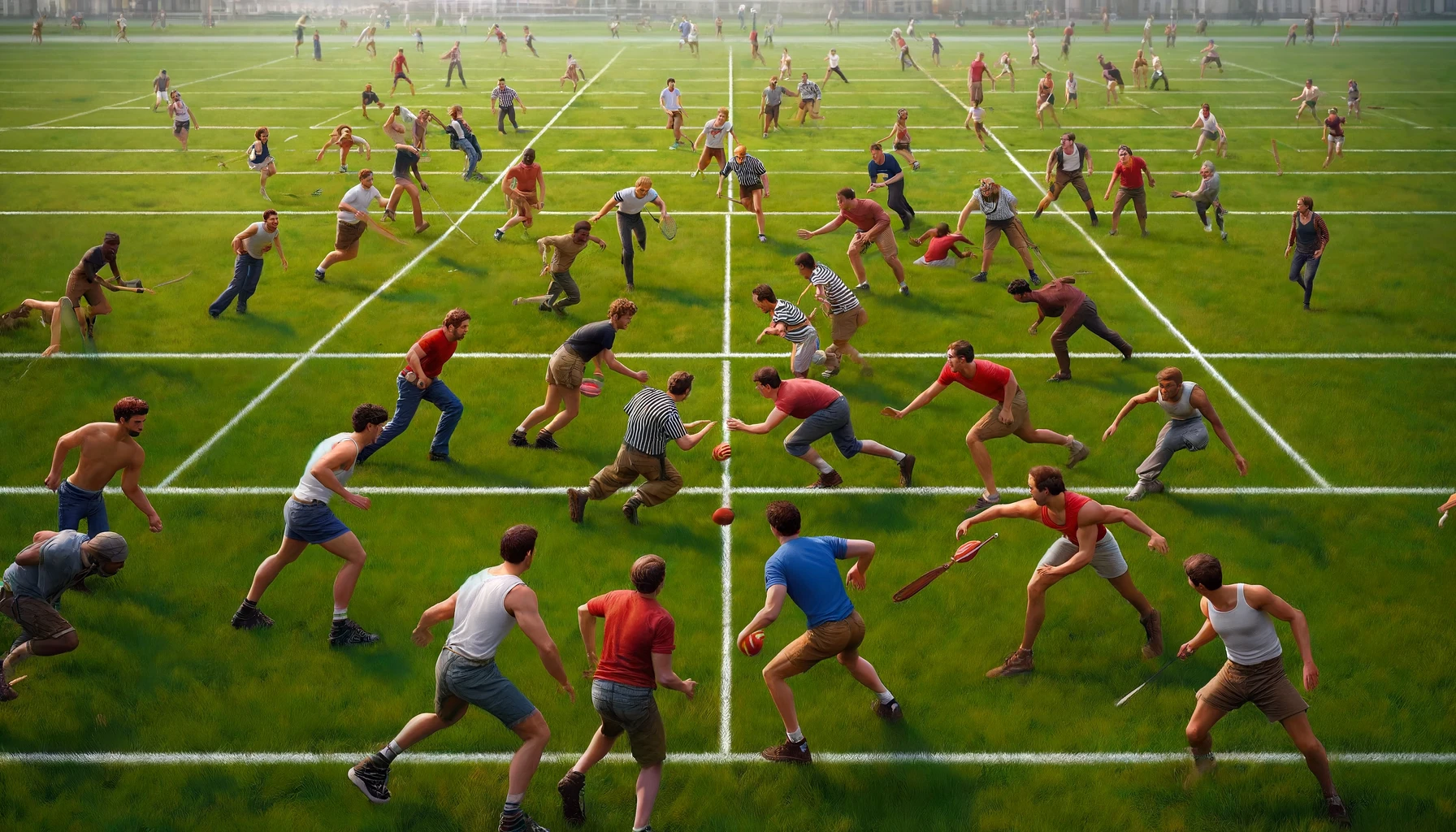
French vs. English
Two teams compete on a field divided into two halves by three lines. Each team places an equal number of objects behind their baseline. The game involves stealing as many objects as possible without getting caught. To steal an object, players must successfully reach the opposing team's baseline without getting tagged. If players get tagged while on the opponent's half of the field, they wait at the opponent's baseline until rescued. Once players reach the opposing baseline, they steal one object and release one captive teammate. The team that steals the most objects wins.

The Ha Ha Game
Have everyone stand in a circle. First person says "Ha", person beside them says "Ha Ha", person beside them says "Ha Ha Ha" and so on. If you start laughing, you are out.

Psychologist
Choose one player to be the psychologist and have them leave the room. Everyone playing is assigned a strange problem (example: they think they are on the moon, they are late for something, etc.). Psychologist comes back in and must guess each person's problem by asking them questions.

Most Likely To
Most Likely To is a game where we gather in a circle. Begin with one person asking, "Who's most likely to trip over their own feet?" (Or another scenario, attribute, deed, etc.) Count down from three (performing a drumroll with your hands is encouraged) and then have everyone point at who they think would be most likely to do said activity. Whoever has the most fingers pointed at them is out. Go around the circle asking a question until all but one person is out. You can skip the eliminations to make the game last longer. This fun party game is perfect for breaking the ice and getting to know each other better. Whether you're with friends or family, asking "Who's most likely to..." questions can reveal amusing insights and create lasting memories.

Sherlock
In the game "Sherlock," participants gather, and one person is chosen as the detective, called "Sherlock," for each round. The detective has 30 seconds to examine everyone before leaving the area. During their absence, a noticeable change occurs within the group, such as someone putting on or taking off a jacket, two people swapping places, or someone styling or undoing their ponytail. The key is that the change is easily noticeable. It can involve one person or multiple people in the group. For instance, everyone might untie their shoes for a round. Upon returning, The detective tries to guess the change within a minute. If they lack significant clues, the group can decide whether to provide a hint.

Kho-Kho
A popular Indian game played on a rectangular field with two teams, where players from one team try to tag players from the other team before they can "sit" on the ground and avoid being tagged.

Sticker Stalker
Purchase a pack of stickers. Each person must discreetly place all their stickers on other party guests; the first to use all their stickers wins. If they get caught stickering someone, they must accept a sticker. At the end of the evening, you can laugh about how sneaky some people are—and wonder how you ended up with stickers all over your back without even noticing.

Chicken Fighting
All players have to hop on one leg while holding their other leg up behind their back. The goal is to knock over the other players. If you fall, you are out. Last player standing wins.
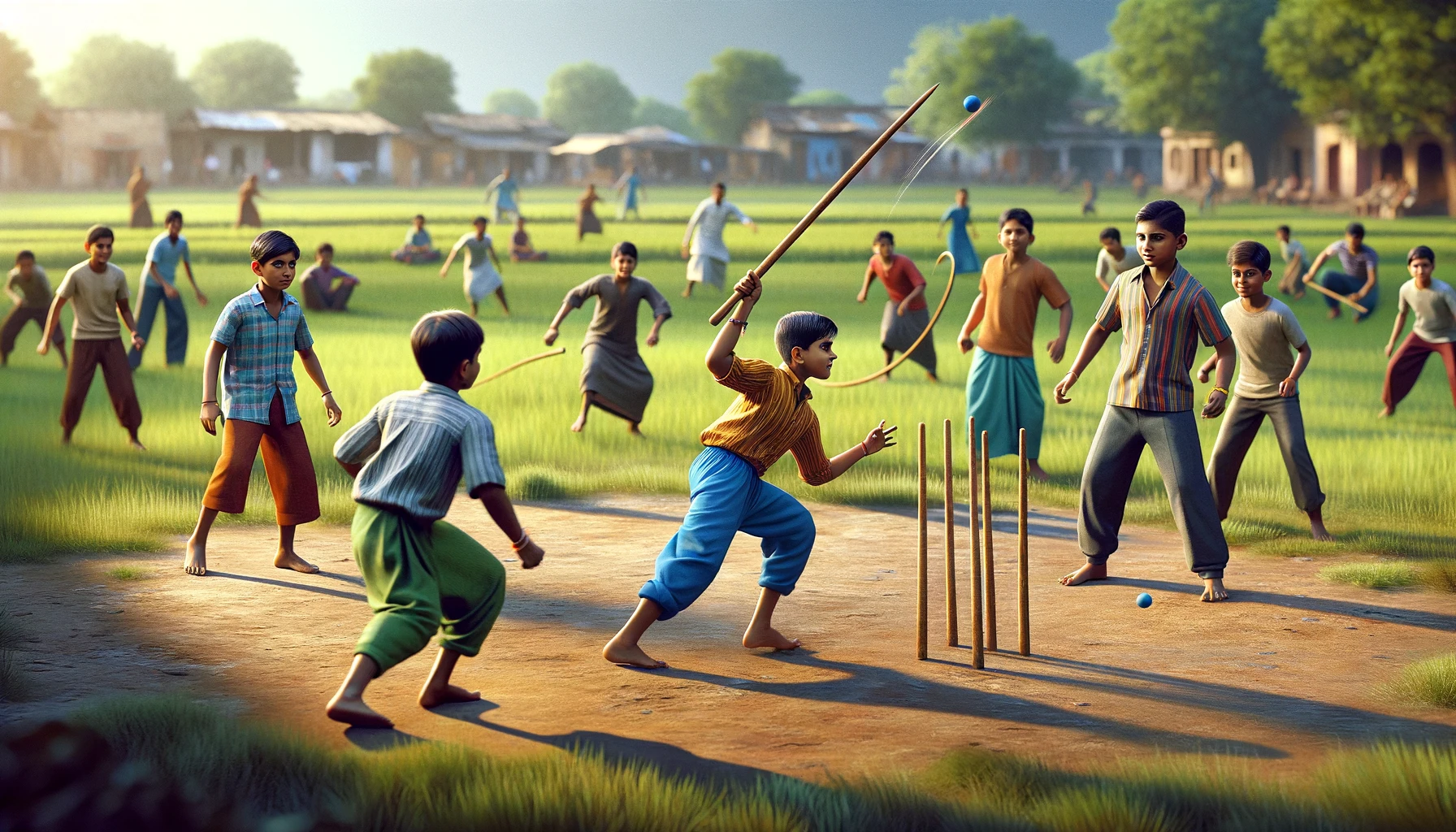
Gilli-Danda
This is a traditional Indian street game, consists of two main components: the "gilli" and the "danda." The gilli is a small wooden stick or spindle, while the danda is a larger stick or bat. The game involves one player from the hitting team placing the gilli on the ground, and then striking it with the danda, aiming to hit it as far as possible. While the gilli is in the air, players from the opposing team try to catch it or retrieve it before it hits the ground. Points are scored based on the distance the gilli travels before being caught or retrieved. The team with the most points at the end of the game wins.
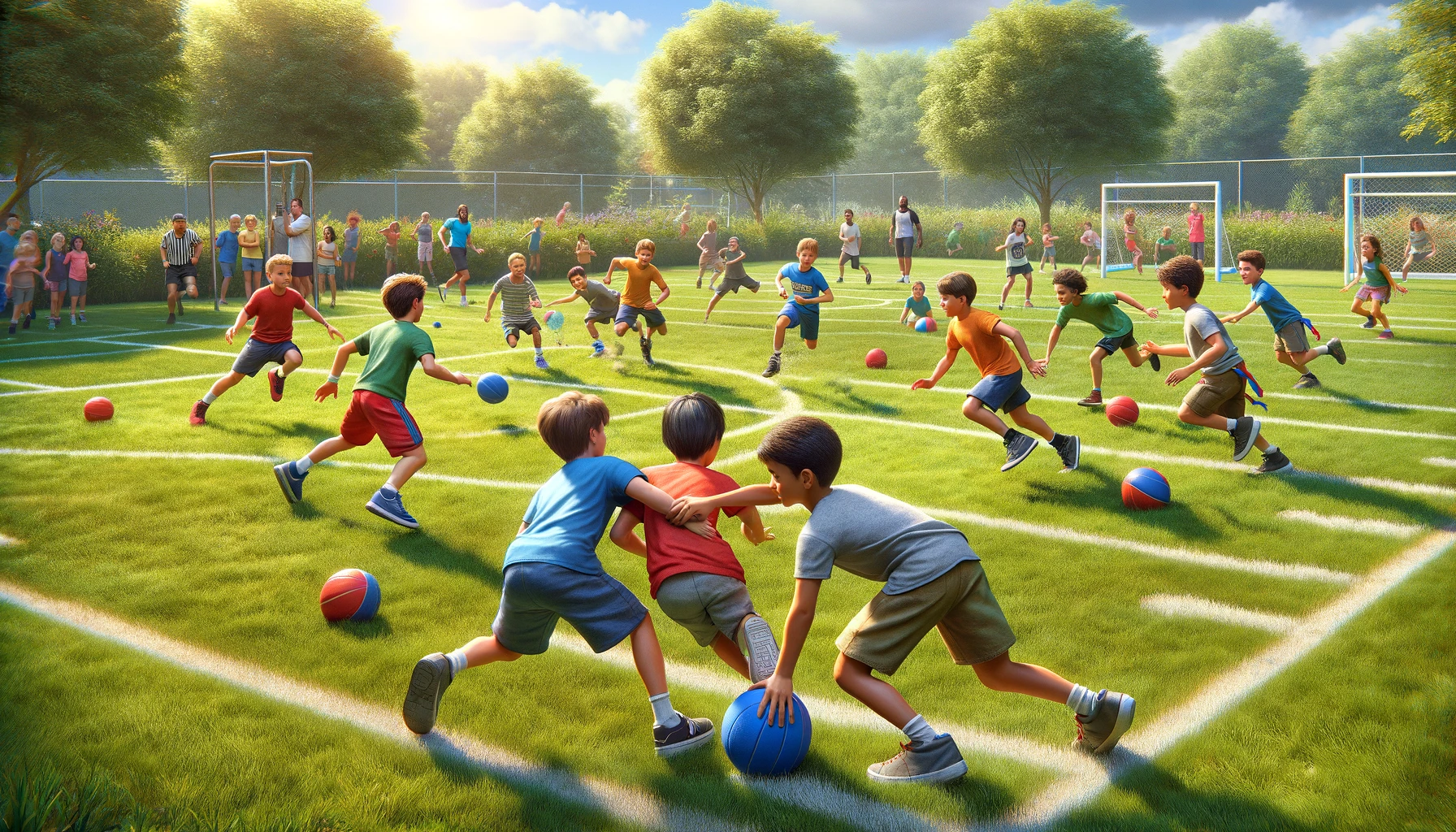
Sneak
“We’re gonna play “Sneak,” a game with two teams competing to steal and possess the most balls. Each team defends one half of the field where members are always SAFE. Each side has a “Ball Zone” with 5 balls and a “Waiting Area.” The goal is to steal your opponent’s balls and place them in your hula hoop. You can steal by crossing into the opponent's side and taking balls from their “Ball Zone.” Balls can be thrown to teammates only on the opponent’s side. Each player can handle one ball at a time. If tagged on the opponent’s side, you go to their “Waiting Area” until tagged by your teammate. Defend your “Ball Zone” and “Waiting Area,” but stay 3 feet away from their edges. If a player reaches an opponent’s Ball Zone without being tagged, one foot inside the hula hoop is safe. The game ends when one side has 9 balls or lacks free players.

